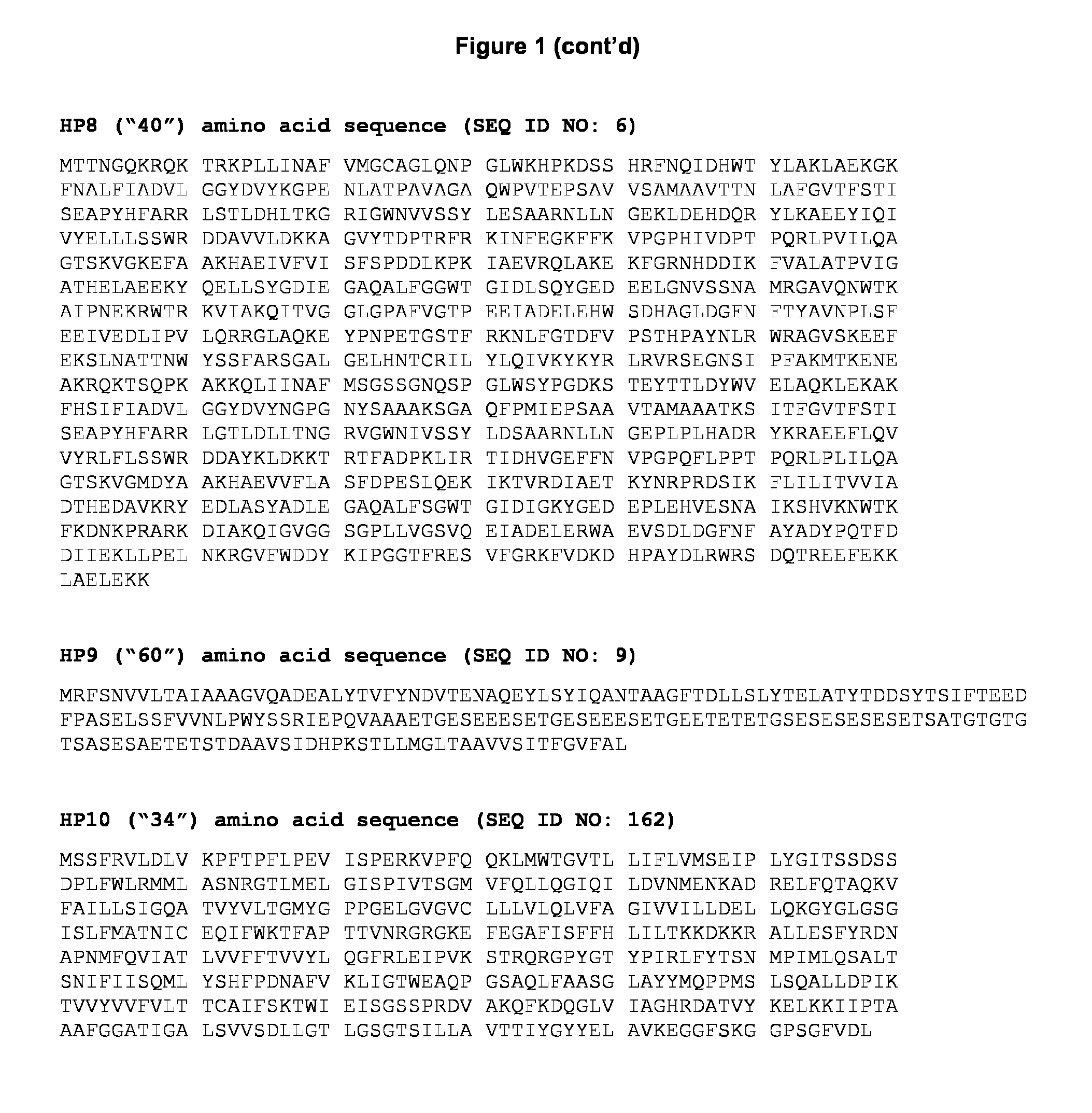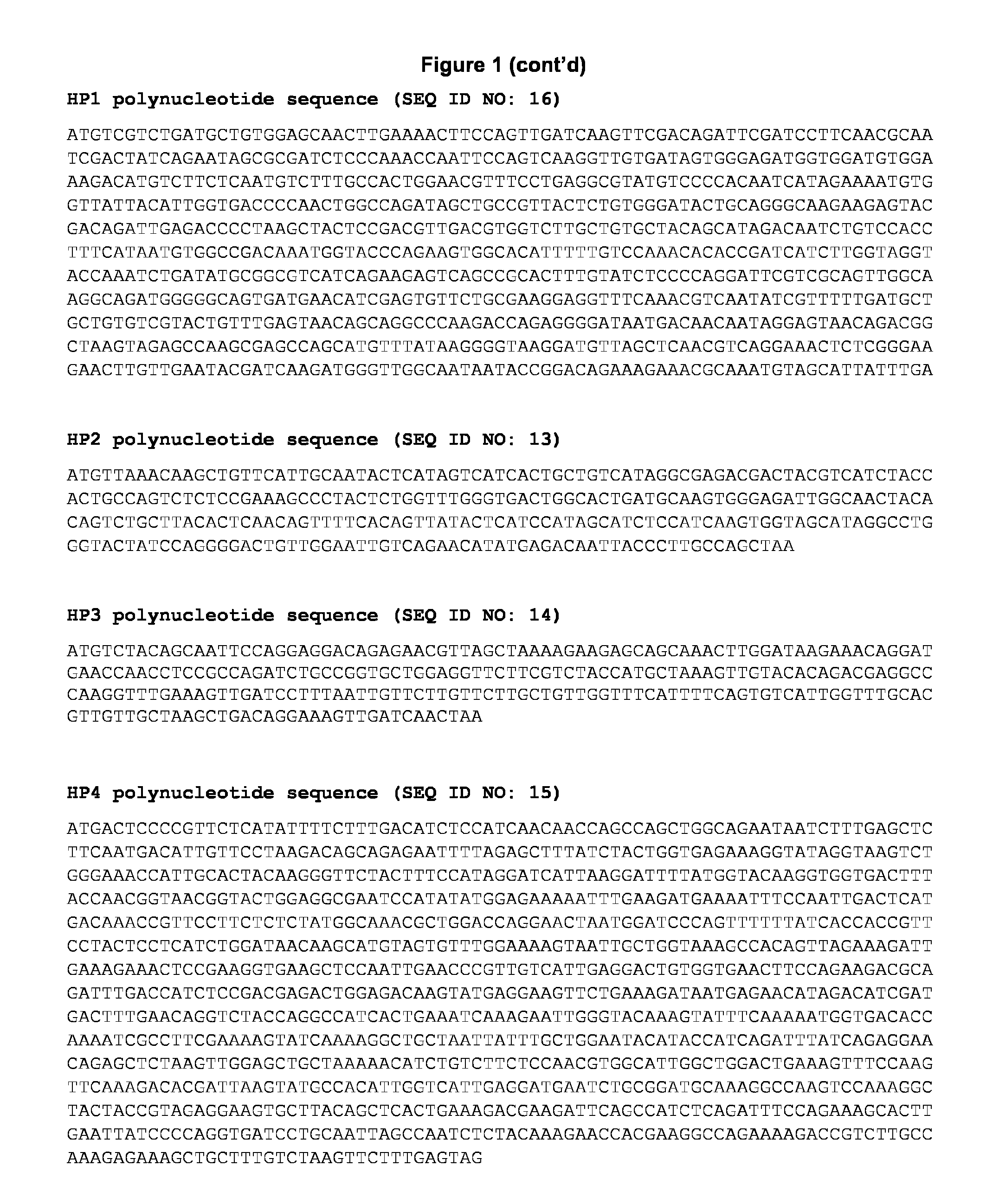Recombinant host cell engineered to overexpress helper proteins
- Summary
- Abstract
- Description
- Claims
- Application Information
AI Technical Summary
Benefits of technology
Problems solved by technology
Method used
Image
Examples
example 1
Generation of P. pastoris Production Strains
[0369]a) Construction of P. pastoris Strains Secreting Antibody Fab Fragment HyHEL
[0370]P. pastoris CBS7435 (CBS, genome sequenced by Küberl et al. 2011) mutS variant was used as host strain. The pPM2d_pGAP and pPM2d_pAOX expression vectors are derivatives of the pPuzzle_ZeoR vector backbone described in WO2008 / 128701A2, consisting of the pUC19 bacterial origin of replication and the Zeocin antibiotic resistance cassette. Expression of the heterologous gene is mediated by the P. pastoris glyceraldehyde-3-phosphate dehydrogenase (GAP) promoter or alcohol oxidase (AOX) promoter, respectively, and the S. cerevisiae CYC1 transcription terminator. The light chain (LC) and the heavy chain (HC) of the antibody Fab fragment HyHEL (FIG. 2) were amplified from vector DNA template (carrying the gene of interests with N-terminal S. cerevisiae alpha mating factor signal leader sequence) using the primers for HyHEL-HC and HyHEL-LC in Table 3, and each l...
example 2
Chemostat Cultivation
[0376]Cultivations were performed with 1.4 L DASGIP reactors (Eppendorf, Germany) with a maximum working volume of 1.0 L.
[0377]Following media were used:
[0378]PTM1 trace salts stock solution (per litre) contains: 6.0 g CuSO4. 5H2O, 0.08 g NaI, 3.36 g MnSO4. H2O, 0.2 g Na2MoO4. 2H2O, 0.02 g H3BO3, 0.82 g CoCl2, 20.0 g ZnCl2, 65.0 g FeSO4.7H2O, and 5.0 mL H2SO4(95%-98%).
[0379]Glycerol Batch medium (per litre) contains: 2 g Citric acid monohydrate (C6H8O7.H2O), 39.2 g Glycerol, 20.8 g NH4H2PO4, 0.5 g MgSO4-7H2O, 1.6 g KCl, 0.022 g CaCl2.2H2O, 0.8 mg biotin and 4.6 mL PTM1 trace salts stock solution. HCl was added to set the pH to 5.
[0380]Glucose Chemostat medium (per litre) contains: 2.5 g Citric acid monohydrate (C6H8O7.H2O), 55.0 g glucose monohydrate, 21.8 g NH4H2PO4, 1.0 g MgSO4.7H2O, 2.5 g KCl, 0.04 g CaCl2.2H2O, 4.0 mg biotin and 2.43 mL PTM1 trace salts stock solution. HCl was added to set the pH to 5.
[0381]Methanol / Glycerol Chemostat medium (per litre) cont...
example 3
Microarrays & Data Evaluation for Transcriptomic Experiments
[0385]a) RNA isolation and sample preparation for microarray hybridization
[0386]The RNA was isolated from chemostat sample cells using TRI reagent according to the supplier's instructions (Ambion, US). The cell pellets were resuspended in TRI reagent and homogenized with glass beads using a FastPrep 24 (M.P. Biomedicals, CA) at 5 m s−1 for 40 seconds. After addition of chloroform, the samples were centrifuged and the total RNA was precipitated from the aqueous phase by adding isopropanol. The pellet was washed with 70% ethanol, dried and re-suspended in RNAse free water. RNA concentrations were determined by measuring OD260 using a Nanodrop 1000 spectrophotometer (NanoDrop products, DE). Remaining DNA from the samples was removed using the DNA free Kit (Ambion, Calif.). Sample volume equal to 10 μg RNA was diluted to 50 μL in RNAse free water, then DNAse buffer I and rDNAse I were added and incubated at 37° C. for 30 minute...
PUM
| Property | Measurement | Unit |
|---|---|---|
| Fraction | aaaaa | aaaaa |
| Fraction | aaaaa | aaaaa |
| Therapeutic | aaaaa | aaaaa |
Abstract
Description
Claims
Application Information
 Login to View More
Login to View More - R&D
- Intellectual Property
- Life Sciences
- Materials
- Tech Scout
- Unparalleled Data Quality
- Higher Quality Content
- 60% Fewer Hallucinations
Browse by: Latest US Patents, China's latest patents, Technical Efficacy Thesaurus, Application Domain, Technology Topic, Popular Technical Reports.
© 2025 PatSnap. All rights reserved.Legal|Privacy policy|Modern Slavery Act Transparency Statement|Sitemap|About US| Contact US: help@patsnap.com



